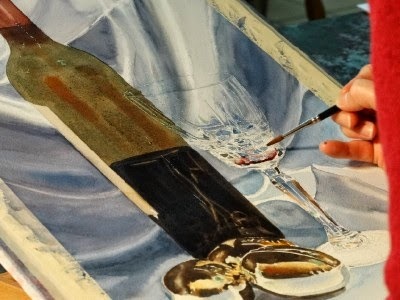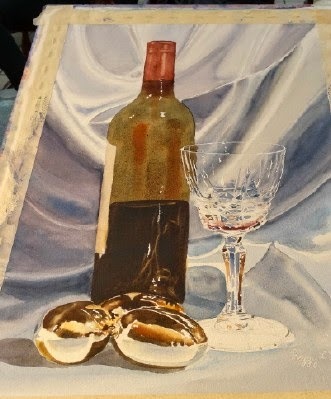PROGRAM - April 2, 2014
Rhonda introduced our Guest Artist – Peggy Bishop, who is a very talented specialist in painting Glass and Crystal. Peggy uses a photo realistic approach, gives much attention to details. Her work has been displayed in many places, including the Alps. Peggy works full-time, so has only evenings and weekends to pursue her artwork. It takes hours just to set up, get the lighting correct, and take multiple photos of her subject. She doesn’t print out the photos, but enters them into her I-Pad. That way she can zoom in on details, etc.
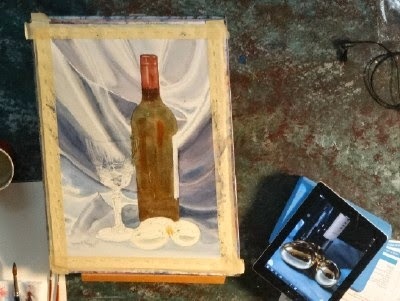
She generally use 140 lb. paper on gator board, or sometimes a 260 lb. paper, that she then staples to plywood, and tapes down for a sharp edge. When she uses masque, she uses a bottle that has an ultra-fine dispenser. It clogs easily so must be washed immediately. She uses sable brushes, usually quite small; some with brushes at both ends. She has recently gotten a new palette, with no dividers, and is using only fully-transparent colors. She recommends mixing more paint than you think needed. She tries out the mixed color on another piece of paper before applying to her painting. She worked on an easel that she purchased at Hobby Lobby for about $20. She normally stands or half sits while she paints.
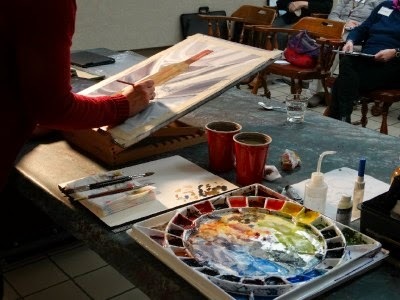
Her subject for the demo was a background of satin cloth, with a wine bottle, crystal wine glass, and some reflective “eggs”. She did not use masque on the cloth because she wanted it to be very soft, no hard edges. She had prepared some of the painting before hand so that we could watch her do the glass/crystal parts. She did the dark part of the eggs first, then worked on the crystal wine glass. She suggested leaving more white spaces than there really are – that somehow it makes it more realistic. The secret to shininess is contrast; dark next to light.
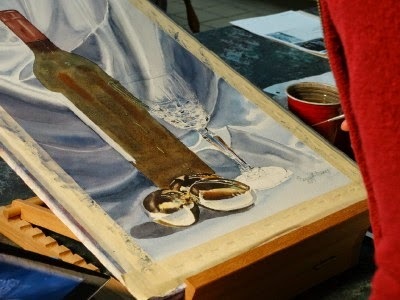
She said that glassware is more forgiving than one would think, and that the pattern doesn’t have to be “perfect” to look good. If you get fatigued in working on all the details, take a break, work on another piece, or advance another project; then go back to the precision work. Asked a question, she responded – no, she does not put “imaginary” colors into the glass – at least not on purpose. Upon a request from the audience, she painted the wine bottle half-full.
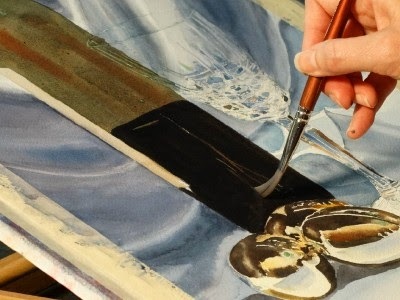
It was fascinating to see a crystal wine glass appear before our eyes. Wonderful work!
There was a critique session, and then lunch for those staying to paint. See you next month!
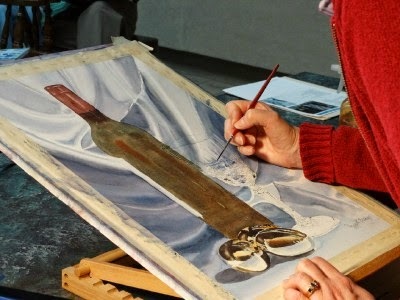
Submitted by Joyce Grothaus, Secretary, GCWS
Photos by Deb Ward

